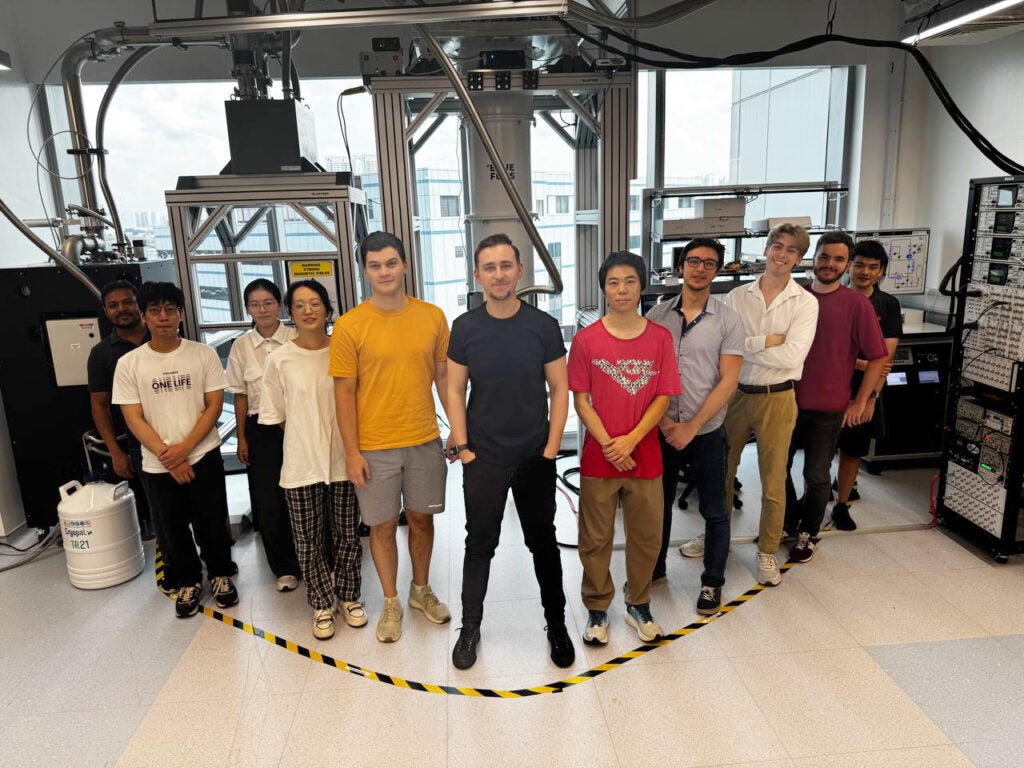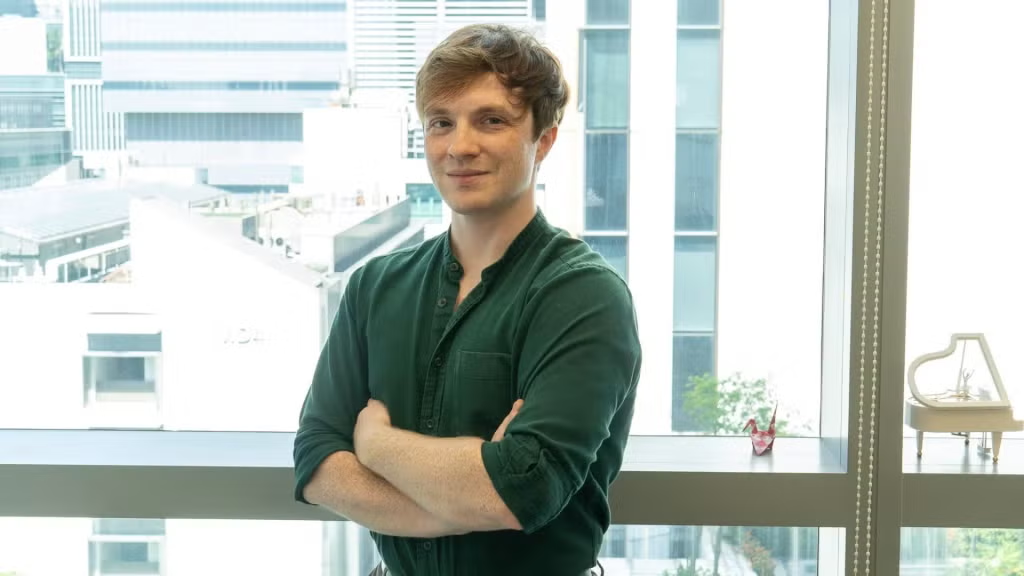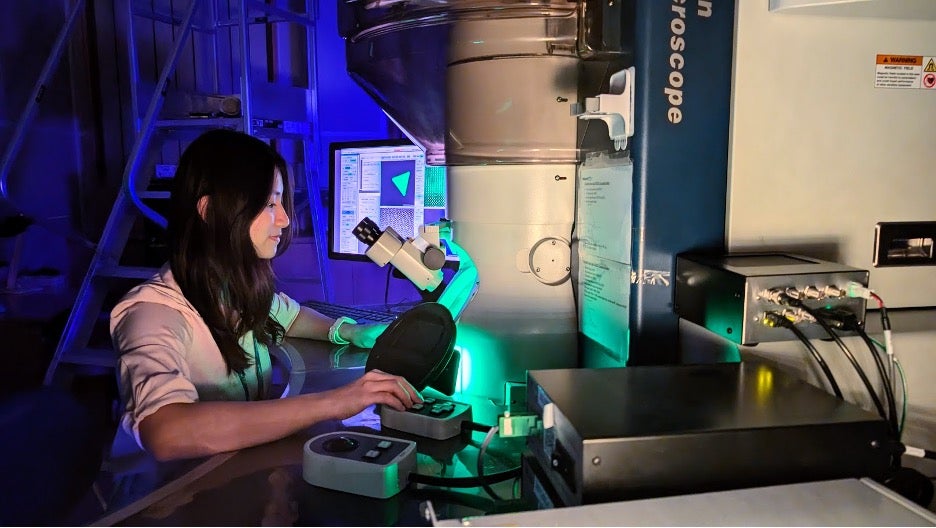
Asst. Prof. Denis Bandurin’s research team (NUS Materials Science and Engineering and Institute for Functional Intelligent Materials) has reported experimental observations of nonreciprocal supercurrent flow in topological insulator/superconductor hybrid structures. Their work contributes to addressing a long-standing question about the possible presence of exotic quasiparticles known as Majorana bound states (MBSs) in such systems. The findings were recently published in Science Advances.
Topological insulators (TIs) are unusual materials that act as insulators in their interior but conduct electricity on their surfaces, where electrons move in a robust, protected manner. Superconductors (SC), in contrast, carry electrical current without resistance when cooled to very low temperatures. When two are coupled together, theory predicts the emergence of Majorana bound states—exotic quantum particles that act as their own antiparticles. They are expected to be robust against noise, being promising candidates for fault-tolerant quantum computing. Previous studies reported anomalous behavior in TI–based Josephson junctions (devices in which two SC are coupled through a narrow TI bridge) and attributed these observations to Majorana physics. The NUS team demonstrates that the anomalies can be accounted for without the need to invoke Majorana bound states, challenging earlier interpretations.
“To fabricate the high-quality Josephson junction, we transferred superconducting NbSe₂ flakes with a naturally occurring crack onto a thin slab of Bi₂Se₃, a commonly studied TI. This fabrication approach resulted in an atomically smooth and clean interface between the superconductor and topological insulator,” explained Xiangyu Zhou, an equally-contributed first author of the study and a PhD student in Prof. Bandurin group who developed nanofabrication techniques to assemble the junction.
To test for the presence of Majorana bound states, the first author of the paper Andrei Kudriashov and a Ph.D. student in Prof. Bandurin group developed a methodology to probe a special quantity, called current-phase relation, that provides a quantum mechanical snapshot on the physics that governs the dissipationless supercurrent flow through the junction. Conceptually, the CPR is analogous to I-V characteristics in ordinary electronic components like resistors or diodes but applied to describe the properties of Josephson junctions.
“There were several studies on CPR measurements in topological insulator–based Josephson junctions,” said Andrei Kudriashov, the paper’s first author and PhD student at Prof. Bandurin’s group. “Surprisingly, none had explored how the CPR changes with the magnetic field, where Majorana signatures are expected to be most visible. When we carried out those measurements, we saw anomalies echoing theoretical predictions for Majorana states. Observing such features was striking to me, but it also encouraged me to systematically explore all possible scenarios.”
Surprisingly, further analysis of the data revealed something unexpected: the supercurrent was stronger in one direction than the other—a non-reciprocal behavior known as the Josephson diode effect. While interesting in its own way and potentially useful for superconducting electronics, this effect mimicked sought-for Majorana states. This result suggests that prior claims of Majorana signatures in similar systems may have stemmed from misinterpreting more conventional effects.
“Re-examining established interpretations is essential for progress in complex quantum systems,” said Asst. Prof. Denis Bandurin. “In this case, my students’ critical perspective allowed us to revisit earlier claims and uncover a more consistent explanation. Our findings not only rule out the presence of Majorana bound states in Bi₂Se₃/NbSe₂ junctions but also reveal a distinct type of Josephson diode effect, which may inform future design strategies for superconducting nanoelectronics.
Looking ahead, the team plans to apply their method to explore other quantum materials. “In this project, my group developed a methodology that can create new hybrid superconducting devices with any material platform and probe its quantum properties with ultra-high precision”, adds Prof. Bandurin. “We are looking forward to collaborating with other researchers in Singapore to probe exciting physics emerging in superconducting quantum materials with the goal of uncovering new exciting fundamental effects emerging at the nanoscale”.
To read more, visit: https://www.science.org/doi/epdf/10.1126/sciadv.adw6925
References:
Kudriashov, Andrei, et al. “Non-Majorana origin of anomalous current-phase relation and Josephson diode effect in Bi2Se3/NbSe2 Josephson junctions.” Science Advances 11.24 (2025): eadw6925.





